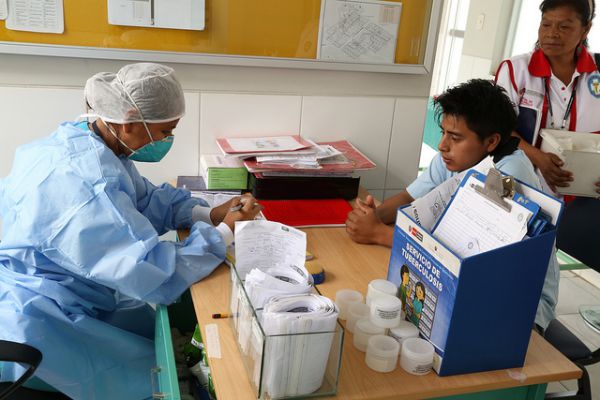By: Rachel David
Send to a friend
The details you provide on this page will not be used to send unsolicited email, and will not be sold to a 3rd party. See privacy policy.
A piece of kit that quickly multiplies the DNA of parasitic worms could detect infections by schistosome species more than six times faster than the most accurate existing method.
Test results published in PLOS Neglected Tropical Diseases last week show that the device can detect infections by Schistosoma mansoni in mice with high accuracy from a drop of blood — and it can do so after only a week of infection.
This parasite is the main cause of the neglected tropical disease schistosomiasis (bilharzia).
The same kit can also detect infection with other schistosome parasites and helminths such as filarial worms, says Robert Greenberg, a parasite researcher at the University of Pennsylvania in the United States, who was part of the research team.
The kit works by multiplying the parasite’s DNA, using a process known as loop-mediated isothermal amplification, or LAMP, which previous studies had shown can detect schistosome DNA in infected samples. The amplified DNA is tagged with a fluorescent molecule and its presence confirmed using a smartphone camera.
Greenberg and the team found that the kit could diagnose infection with S. mansoni much earlier than the existing gold standard, which involves detecting parasite eggs in urine and stool samples through a microscope. “[Current tests] require production of eggs, which means a lag for schistosomiasis of at least six weeks,” he says.
The device is also cheaper and simpler than conventional testing, making it possible to use it at the point of care rather than sending samples to special laboratories, says Greenberg.
The work was carried out using infected mice but the test should also work in humans, Greenberg says. The next stage of the project is to test human blood samples as well as other fluids such as urine and saliva through laboratory and field tests.
Schistosomiasis is estimated to cause more than 200,000 deaths in Sub-Saharan Africa each year. Infection occurs when humans come into contact with water infested with snails carrying the parasite and can damage the bladder, kidneys, intestines and liver.Ultimately, Greenberg and his collaborator Haim Bau, also from the University of Pennsylvania, envisage that the device would become available as a self-contained disposable kit, containing all the necessary reagents.
“This is a very interesting development and technological advancement,” says Russell Stothard from the Liverpool School of Tropical Medicine in the United Kingdom. But he says it will be a challenge to turn the innovation into a marketable product because of a lack of investment for rapid diagnostics.
References
Jinzhao Song and others Molecular detection of schistosome infections with a disposable microfluidic cassette (PLOS Neglected Tropical Diseases, 31 December 2015)














